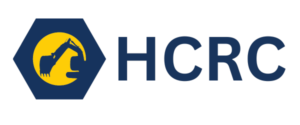When you’re on the job hunt, your resume and LinkedIn profile are often the first impression you make on potential employers. And like any first impression, inconsistencies—no matter how small—can cast doubt and raise red flags.
If your resume says one thing and your LinkedIn says another, it can create confusion, concern, and in the worst-case scenario, cost you the opportunity before you ever make it to an interview.
Why Alignment Matters
Hiring managers and recruiters routinely cross-check your resume against your LinkedIn profile. If job titles, employment dates, or unexplained career gaps don’t line up, the assumption isn’t usually in your favor.
Even honest mistakes can be interpreted as dishonesty or a lack of attention to detail—two things that can hurt your credibility and stall your job search.
Here’s why it matters:
1. Discrepancies = Dishonesty
Even if it’s unintentional, mismatched job dates or titles can suggest you’re trying to hide something. Employers may wonder if you’re inflating your experience or glossing over gaps.
2. Lack of Attention to Detail
Accuracy matters in every industry—especially construction. If you can’t double-check your own work history, how can a company trust you to manage budgets, crews, or timelines?
3. Unexplained Career Gaps
Taking time off work isn’t a problem—but failing to explain it is. Large employment gaps without context can lead recruiters to assume the worst. Fortunately, LinkedIn allows you to add a Career Break section so you can provide clarity and transparency.
4. Background Checks Will Catch It
Employers verify your employment history during reference checks. If you list three years on your resume, but HR records show two and a half, that raises questions—fast.
5. Recruiters Move Fast
Inconsistent profiles make hiring teams pause—and often pass. They don’t have the time or interest to chase down clarifications. If they spot something that doesn’t add up, they’re likely to move on to the next candidate.
How to Avoid These Red Flags
The good news? It’s easy to fix. Here are a few simple steps to keep your resume and LinkedIn in sync:
-
Match employment dates exactly – down to the month and year
-
Use consistent job titles – even if the responsibilities changed, titles should match
-
Address career gaps clearly – especially if they’re longer than a few months
-
Proofread everything for accuracy – it’s worth a second (or third) look
These simple adjustments take minutes but can make a major impact on how employers perceive you.
Final Thoughts
Your resume and LinkedIn profile should work together to tell a clear, consistent story about your career. Don’t let minor discrepancies create major doubts.
Take a few minutes today to align your resume and LinkedIn. It might just be the edge you need to land your next opportunity.






